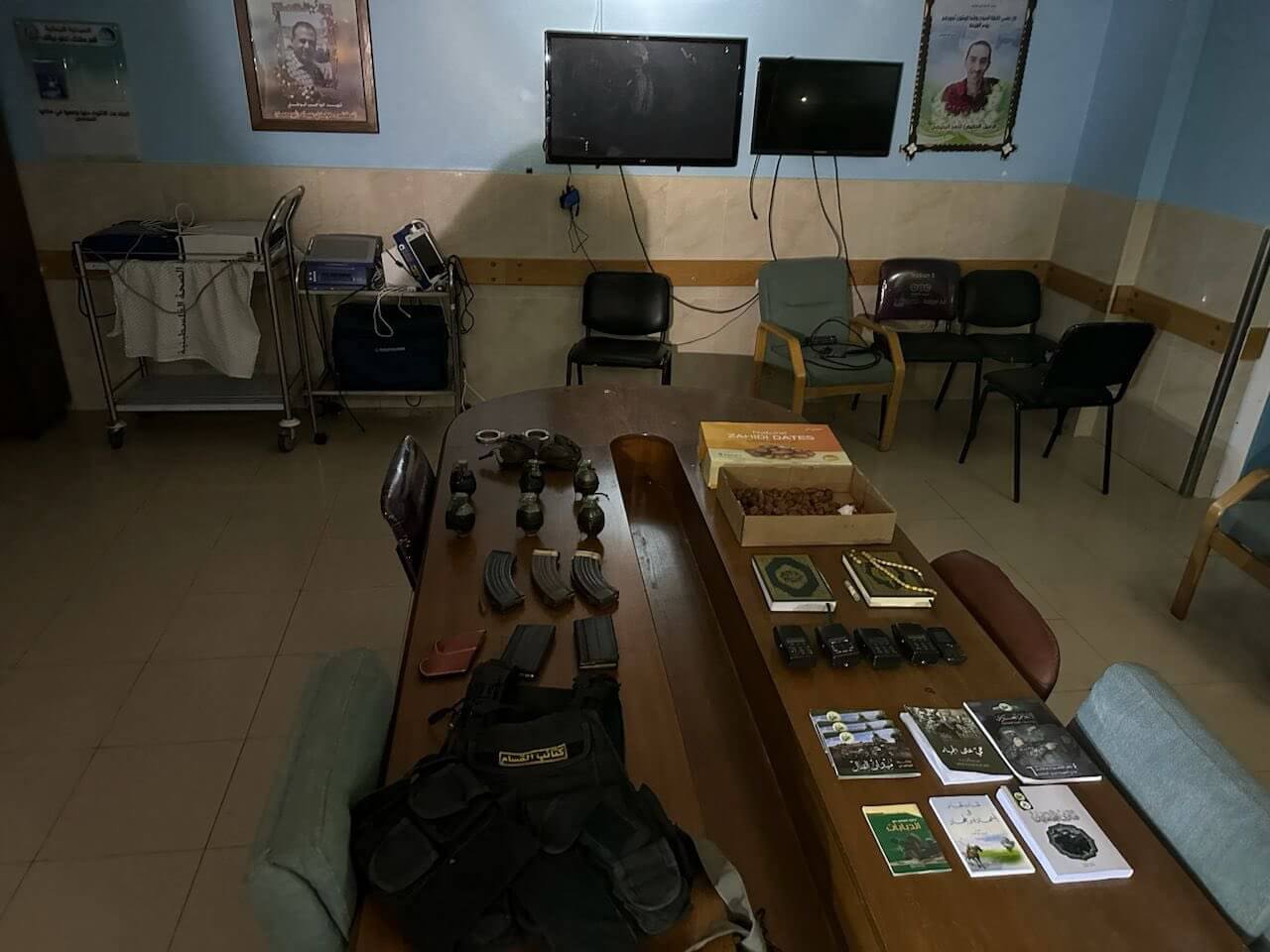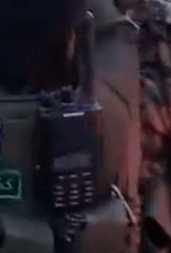
Clues emerge concerning the communications systems Hamas relies on as hostilities continue in the Gaza Strip.
Israeli Defence Force (IDF) troops entered Gaza City’s Al-Shifa Hospital on 15th November, a facility the IDF asserted was being used by Hamas insurgents. The force had laid siege to the hospital since 11th November. The IDF had claimed that Hamas cadres were using a bunker buried below the hospital as a headquarters. Hamas denied this allegation. The Israeli government commenced military operations against Hamas from 7th October. Earlier that day Hamas insurgents attacked several targets in Israel killing and injuring over 8,600 people, taking a further 240 people hostage. 72 have since been released in exchange for Palestinian prisoners.
Following the raid, the Israeli government placed photographs on social media of what it claimed was Hamas materiel left at the facility. One of the pictures gives an insight into the tactical communications used by Hamas fighters. Four civilian-standard handheld radios, along with a single cellphone, can be seen laid out on a table. The use of such communications systems is corroborated by publicly available pictures of Hamas fighters. These photographs show civilian standard handheld radios affixed to Hamas fighters’ webbing.
Civilian radios
A study of some of these devices reveal that they may be Puxing PX-UV973 handheld, dual-band radios. The manufacturer’s information says these carry traffic across Very High Frequencies (VHF) of 136 megahertz/MHz to 174MHz and Ultra High Frequencies (UHF) of 400MHz to 470MHz. The radio produces five watts of VHF output power and four watts of power in UHF but with a range unlikely to be longer than a few kilometres. Ranges maybe further shortened on account of the dense built-up urban terrain of Gaza’s main conurbations. Moreover, these devices appear to lack any robust communications/transmission security. The Israeli Intelligence Corps’ Unit 8200 Signals Intelligence (SIGINT) service had routinely eavesdropped on Hamas handheld radios. Nonetheless, it ceased this activity in 2022. Israeli media reports stated that Unit 8200 believed this activity to be a “waste of effort.”

Cellphones have appeared in other pictures previously released by the Israeli government of equipment it says the IDF captured from Hamas, publishing photographs to this effect in 2021. These show a mix of legacy cellphone handsets and more modern smartphone designs. According to the Stockholm International Peace Research Institute (SIPRI) the Islamic Republic of Iran and the Democratic People’s Republic of Korea (DPRK) supply materiel to Hamas. SIPRI is a non-profit organisation based in the Swedish capital that studies conflict, the arms trade and the global defence industry.
Iran is home to companies which research, develop and produce tactical communications systems; Iran Communications Industries and the Tactical Communications Research Centre being two. Meanwhile, Glocom is a company with a presence in Malaysia. Despite Glocom’s Kuala Lumpur address it is believed to be a front company enabling the DPRK government to sell kit while avoiding United Nations sanctions. Glocom’s products include tactical radios. The DPRK remains under international sanctions because of her clandestine weapons of mass destruction programmes.
Military grade?
Two of Hamas’ alleged benefactors produce tactical radios including handheld, vehicular and backpack systems, yet no evidence appears in the public domain of Hamas using such kit. This prompts several questions: Firstly, is Hamas even in possession of such equipment? Photographic evidence would suggest not. Perhaps this is not surprising? The Iranian government maybe reluctant to supply its own tactical communications systems to Hamas lest they fall into the hands of the IDF. It would be safe to assume that Israeli SIGINT experts are already familiar with Iranian tactical communications. Why would Tehran take the risk, particularly if Hamas cadres can perform operations with handheld radios and cellphones? What about Glocom radios, or even tactical radios sourced from the People’s Republic of China (PRC)? Once again, perhaps the governments of these countries are reticent to supply this equipment should it end up in Israeli hands. Israel and the United States maintain a close defence relationship. There is every chance that captured DPRK or PRC tactical radios could yield their secrets to American, as well as Israeli, SIGINT experts.

Comms doctrine
There is the possibility that Hamas does not need anything more sophisticated for the type of operations it performs. The movement’s tactical communications doctrine may focus on handheld radio and cellphone use. Handheld systems may provide basic squad communications with cellphones linking upwards to higher echelons of command. Likewise, Hamas fighters may carry cellphones as a backup should their handheld communications be unavailable for any reason.
Moreover, reports showing an alleged Hamas command and control centre do not appear to show any military-grade radios in this facility. Instead, Hamas commanders are using what seem to be standard civilian landlines for communications. Given the extensive tunnel network Hamas has built below Gaza, communications with subterranean cadres are most likely performed using standard landlines. Radio can become temperamental when used underground.
For now, Hamas does not appear to be employing anything more sophisticated for communications than civilian handheld radios, cellphones and landlines. Such devices and links will be relatively easy to exploit for communications intelligence. Nonetheless, the work of SIGINT experts exploiting Hamas communications could become harder if the organisation receives military-grade radios from its backers in the future.
by Dr. Thomas Withington













